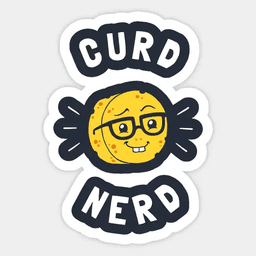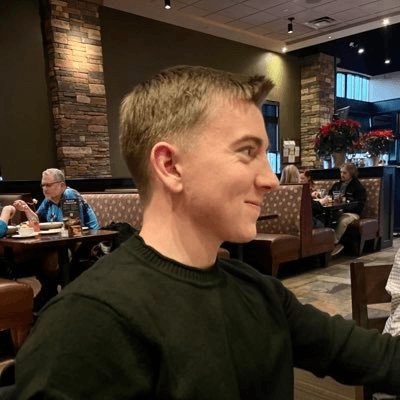How a Beginner Electrician Achieved a 1,670% ROI Flipping a Niche Website


Business Description
Table of Contents
Navigate through the case study sections
Executive Summary
Case Study Content
Turning $950 Into $16,900: One Beginner’s Website Flip
In a world where most people associate big profits with huge investments or tech wizardry, here’s a story that proves just about anyone can win big, if they pick the right digital asset and focus on long-term improvement. Nathan Raad, a Brisbane-based electrician with no previous web experience, decided to try something most would think out of reach. He bought a well-aged but somewhat abandoned niche website (Curd-Nerd.com) for less than $1,000. Here’s everything he did, everything he learned, and exactly how you can repeat his success.
A Hidden Opportunity: Finding the Right Website
Curd-Nerd.com had been quietly publishing content about home cheesemaking since at least 2012. It had a lively base of around 9,000 unique monthly visitors, but no new content had gone up in years. Like many niche projects, it was run by passionate hobbyists who at some point moved on. For Nathan, armed with training from the eBusiness Institute, this sleepy web property was exactly what he needed, a well-trafficked learning laboratory available for the modest price of $950.
Starting Small, Practicing Big
Nathan wasn’t a cheese expert. But he knew the basics of digital renovation: research what brings visitors in, present information better, diversify how a site earns money, then see what moves the numbers. Instead of jumping into a six-figure business or borrowing piles of cash, he started small and safe, just like his mentors Matt and Liz Raad recommended. That meant if he stumbled, the loss would sting but not cripple, and the upside? All his.
Website Renovation 101: What Changed?
Nathan tackled the low-hanging fruit first: redesigning the site with a modern theme that showcased high-performing ad spots. He didn’t stop there. Recognizing that AdSense alone wasn’t enough, he began testing additional monetization options, including affiliate programs for cheesemaking equipment and related e-commerce offers. He also tweaked calls-to-action, tested placement of signup forms, and made sure the site was mobile-friendly to not lose any traffic. Alexa, his partner, contributed design tweaks and optimization ideas, bringing a fresh pair of eyes to old content and formatting.
Jump in Profits: From Side Project to Asset
In just a few short months, Curd-Nerd’s monthly earnings leaped from about $20 a month to between $200 and $300, a 10x increase. What’s more, the diversified income, ads, affiliates, maybe even a guide or two, meant the site’s value multiplied. (No more having all your eggs in one basket. One sudden drop in ad rates? Not the end of the world.) Nathan’s experience also highlighted something critical: once you know what works, scaling to bigger sites is just about picking bigger deals. The core stuff never really changes, only the dollar signs.
Getting Ready to Sell: Why Use a Broker?
Three years later, after seeing steady returns and confident he’d outgrown his first asset, Nathan decided it was time to cash out and move up. He brought in award-winning website broker Joe Burrill, who managed everything from prepping the listing to marketing to negotiating final offers. Lesson? If you’re aiming for the best price, and minimal hassle, a broker can usually get you more money than you’ll save skipping their fee. Curd-Nerd sold for $16,900: that’s more than 17x Nathan’s buy price, not including the profits made during ownership.
Digital Assets: Why Beginners Keep Winning
Stories like Nathan’s aren’t rare in content website flipping. The low barriers to entry, plus thousands of specialized, legacy sites run as hobbies, mean motivated buyers can practice, learn, and repeat. A key insight: renovators aren’t looking for grand slams every time. Sometimes the point is to swing at lots of pitches, keep risk low, and let the process compound. Nathan’s journey shows that success has much less to do with passion for the topic and much more with process and patience, and having a methodology.
Lessons for First-Timers
- Don’t over-invest your first time, keep your risk manageable.
- Look for aged sites with traffic and content, even if they’ve been ignored.
- Renovate the easy stuff: design, monetization, traffic funnels.
- Add more ways to make money right away, not just ads.
- Track results and don’t waste money on features people don’t use.
- When ready, seek help from specialists, especially for the sale.
After the Exit: Skills for Life
Nathan now has something much more than cash-in-hand. He’s learned a strategy he can reuse across dozens of other websites, skills that work on $1,000 deals or $1 million deals. By compounding wins, scaling up with each new buy, and keeping learning, he’s built digital asset experience that’ll serve him for decades. Not bad for a self-taught side hustler who could’ve blown this money on six months of daily coffee.
What You Can Copy Right Now
Start small. Choose an under-monetized or neglected content site with real search traffic. Research what actually brings visitors to the site and then, step-by-step, fix user experience, ramp up monetization, and diversify income streams. You don’t need to be an expert in the niche; you need to be an expert at learning what makes an audience tick and giving them easy ways to buy or click. And when you're ready to exit, don’t cheap out: a skilled broker will almost always pay for themselves.
A Blueprint for New Digital Entrepreneurs
Nathan’s story proves you don’t need to build from scratch, run risky PPC ads, or have deep technical skill. The blueprint? Spot a strong but tired site, renovate it for better monetization, and sell at a profit. Skills compound with experience, not just in dollars, but in confidence and technical knowhow. Anyone who can learn to wire a house can learn to flip a content website. Don’t let big success stories convince you to skip the basics. There’s gold in the forgotten corners of the web for anyone willing to hunt them out and put in real work.
Key Takeaways
- 1Nathan successfully purchased and flipped his first website, growing income from $20 to $250/month and achieving a 1,670% ROI.
- 2Starting with a low-cost, aged content site allowed for a safer learning curve and big upside with minimal risk.
- 3Redesigning the site, optimizing ad placement, and adding new revenue sources drove rapid profit growth.
- 4Using a specialist website broker resulted in a higher exit price and a hassle-free sale process.
- 5Website flipping rewards repeatable process: target neglected sites, renovate for traffic and monetization, then sell for a multiple.
- 6Digital asset investing doesn’t require technical expertise in the niche, learning marketing and optimization is more important than topic mastery.
Key Facts
Tools & Technologies Used
Premium Content Locked
Subscribe to access the tools and technologies used in this case study.
Unlock NowHow to Replicate This Success
Premium Content Locked
Subscribe to access the step-by-step replication guide for this case study.
Unlock NowInterested in Being Featured?
Share your success story with our community of entrepreneurs.
Explore More Case Studies
Discover other inspiring business success stories

How TikTok Ads and Amazon Movers & Shakers Drove $300K+ in One Week
In May 2023, 20-year-old dropshipper Dylan Rudzinski used Amazon Movers & Shakers to find a trending item, built a crisp...
Dylan Rudzinski's Dropshipping Store

How Iman Gadzhi Built an 8-Figure Empire Through Personal Branding
Iman Gadzhi turned personal challenges into a powerful social media presence that seeded a profitable agency, evolved in...
IAG Media

Bootstrapped IT Automation Firm Hits $40K/Month
Cerum Solutions began as a no-code experiment on Bubble.io but soon shifted to practical automations, setting up Salesfo...
Cerum Solutions
